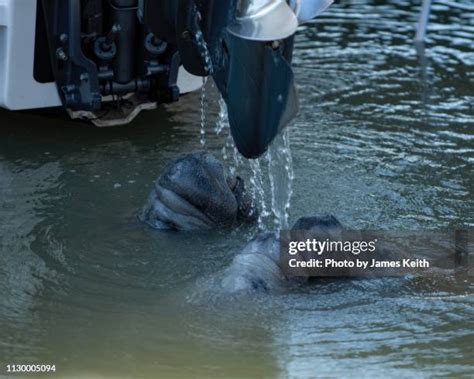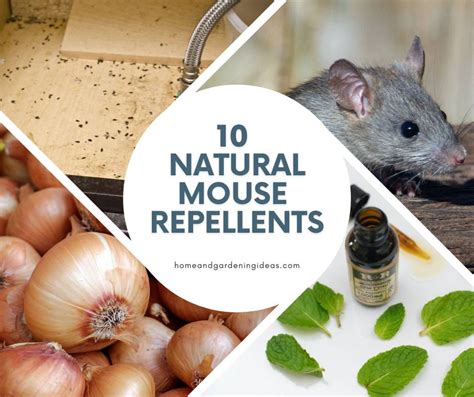
A thirsty manatee was caught on camera taking a refreshing drink from a boat hose in Crystal River, Florida, highlighting the ongoing struggle these marine mammals face due to habitat loss and freshwater scarcity. The video, captured by boaters in the area, quickly went viral, showcasing the manatee’s ingenuity and the public’s fascination with these gentle giants.
CRYSTAL RIVER, FL – A viral video has captured the heartwarming moment a manatee quenched its thirst by drinking water from a boat hose in Crystal River, Florida. The incident serves as a stark reminder of the increasing challenges these marine mammals face due to habitat degradation and limited access to fresh water sources.
The video, which surfaced earlier this week, shows a manatee approaching a boat and seemingly seeking out the water hose. Boaters on board responded by offering the animal a drink, which it readily accepted, eliciting delighted reactions from those witnessing the event.
“It was so adorable to see,” said one of the boaters involved in the encounter. “The manatee just came right up to the boat like it knew exactly what it was looking for. It’s a reminder of how important it is to protect these animals and their environment.”
Manatees, also known as sea cows, are herbivorous marine mammals found in warm coastal waters and rivers. In Florida, they are a beloved symbol of the state’s natural beauty, but their populations are threatened by a variety of factors, including boat strikes, habitat loss, and a decline in freshwater sources.
The Crystal River area is a critical habitat for manatees, particularly during the winter months when they seek refuge in the warmer waters of the area’s natural springs. However, increasing development and human activity in the region have put a strain on these vital resources, leading to concerns about the long-term health and survival of the manatee population.
The Florida Fish and Wildlife Conservation Commission (FWC) has been working to protect manatees and their habitat through a variety of measures, including speed zone regulations for boats, habitat restoration projects, and public awareness campaigns. However, experts say that more needs to be done to address the underlying causes of the threats facing these animals.
“Manatees are an indicator species,” explained Dr. Martine de Wit, a veterinarian with the FWC’s Marine Mammal Pathobiology Laboratory. “Their health reflects the overall health of the ecosystem. When we see manatees struggling, it’s a sign that something is wrong in the environment.”
One of the most pressing issues facing manatees in Florida is the loss of seagrass, their primary food source. Seagrass beds have been declining in recent years due to pollution, nutrient runoff, and boat damage. This decline has led to malnutrition and starvation among manatees, particularly during the winter months when they need to consume large amounts of food to stay warm.
In response to the seagrass loss, the FWC and other organizations have been working to restore these vital habitats. These efforts include planting new seagrass, reducing pollution, and educating boaters about the importance of avoiding seagrass beds.
Another challenge facing manatees is the increasing frequency of harmful algal blooms, or red tides. These blooms can produce toxins that are harmful to marine life, including manatees. When manatees ingest these toxins, they can become sick or even die.
The FWC has been monitoring red tides and their impact on manatees. They also work to rescue and rehabilitate manatees that have been affected by red tide toxins.
The viral video of the manatee drinking from the boat hose has sparked renewed interest in manatee conservation efforts. Many people have expressed a desire to help protect these animals and their habitat.
“It’s encouraging to see so much public support for manatees,” said Dr. de Wit. “Every little bit helps, whether it’s donating to a conservation organization, reporting a distressed manatee, or simply being more careful when boating in manatee habitat.”
The FWC urges boaters to be vigilant and follow posted speed zone regulations in areas where manatees are known to congregate. They also advise boaters to avoid seagrass beds and to report any sightings of injured or distressed manatees to the FWC’s wildlife alert hotline.
“We all have a role to play in protecting manatees,” said a spokesperson for the FWC. “By working together, we can ensure that these gentle giants continue to thrive in Florida’s waters for generations to come.”
The incident also highlights the ongoing debate about the role of human interaction with wildlife. While some people believe that it is important to leave wild animals alone, others argue that offering them assistance, such as providing water during times of drought, is a compassionate act.
The FWC advises people to avoid feeding manatees or providing them with fresh water unless specifically authorized to do so. Feeding manatees can alter their natural behavior and make them more dependent on humans. It can also expose them to harmful toxins or diseases.
However, the FWC also recognizes that there are times when manatees may need assistance, such as during extreme drought conditions or when they are injured or sick. In these cases, the FWC encourages people to contact the agency’s wildlife alert hotline so that trained professionals can assess the situation and provide appropriate care.
The viral video of the thirsty manatee has served as a powerful reminder of the importance of protecting these animals and their habitat. It has also sparked a broader conversation about the role of humans in the lives of wild animals. As Florida continues to grow and develop, it will be increasingly important to find ways to balance human needs with the needs of the state’s iconic wildlife.
Further Context and Analysis
The incident of the manatee drinking from a boat hose, while seemingly isolated and even charming, is indicative of larger environmental stressors affecting manatee populations. Understanding these stressors and the broader implications is crucial for effective conservation efforts.
Habitat Degradation: Beyond the immediate availability of fresh water, the long-term health of manatees is intricately linked to the quality and availability of their habitat. Coastal development, agricultural runoff, and industrial pollution all contribute to the degradation of seagrass beds, which are the primary food source for manatees. This degradation not only reduces the amount of available food but also affects the overall water quality, making manatees more susceptible to disease.
Climate Change Impacts: Climate change is exacerbating many of the threats facing manatees. Rising sea levels can inundate coastal habitats, while changes in water temperature can affect seagrass growth and distribution. More frequent and intense storms can also damage seagrass beds and disrupt manatee migration patterns. Furthermore, altered rainfall patterns can lead to both droughts, as seen in the context of the article, and increased freshwater runoff, which can further degrade water quality.
Boat Traffic and Human Interaction: Boat strikes remain a significant cause of manatee injuries and fatalities. While speed zone regulations are in place in many areas, compliance is not always consistent, and even slow-moving boats can pose a threat to manatees. Human interaction, including feeding, can also have negative consequences, as it can alter manatee behavior and make them more vulnerable to boats and other threats.
Conservation Strategies: Effective manatee conservation requires a multi-faceted approach that addresses the various threats facing these animals. This includes:
- Habitat Restoration: Restoring seagrass beds and improving water quality are crucial for ensuring that manatees have access to adequate food and a healthy environment. This can involve planting new seagrass, reducing pollution, and managing stormwater runoff.
- Boat Speed Regulations: Enforcing speed zone regulations and educating boaters about manatee safety are essential for reducing boat strikes. This can involve increased patrols, stricter penalties for violations, and public awareness campaigns.
- Rescue and Rehabilitation: Rescuing and rehabilitating injured and sick manatees is an important part of conservation efforts. This involves a network of dedicated professionals and volunteers who provide medical care and support to manatees in need.
- Public Education: Educating the public about manatees and the threats they face is crucial for fostering a sense of stewardship and encouraging responsible behavior. This can involve outreach programs, educational materials, and social media campaigns.
- Addressing Climate Change: Mitigation and adaptation strategies are needed to address the long-term impacts of climate change on manatees and their habitat. This can involve reducing greenhouse gas emissions, protecting coastal habitats from sea-level rise, and developing strategies for managing water resources.
The Role of Citizen Science:
Citizen science initiatives can play a valuable role in manatee conservation. By reporting manatee sightings, documenting injuries, and participating in habitat monitoring programs, citizen scientists can provide valuable data to researchers and managers. This data can be used to track manatee populations, identify threats, and evaluate the effectiveness of conservation efforts.
Economic Considerations:
Manatee conservation also has economic implications. Manatees are a popular attraction for tourists, and their presence contributes to the local economy. Protecting manatees and their habitat can help to sustain tourism and other economic activities that depend on a healthy environment.
Ethical Considerations:
Beyond the economic and ecological considerations, there are also ethical reasons to protect manatees. As sentient beings, manatees have a right to exist and thrive. Humans have a responsibility to protect them from harm and to ensure that they have a healthy and sustainable future.
Long-Term Outlook:
The long-term outlook for manatees in Florida is uncertain. While significant progress has been made in protecting these animals, they continue to face a variety of threats. Continued conservation efforts, coupled with a commitment to addressing the underlying causes of these threats, will be essential for ensuring that manatees continue to thrive in Florida’s waters for generations to come. The viral video of the manatee drinking from the boat hose serves as a poignant reminder of the beauty and vulnerability of these gentle giants, and the importance of working to protect them.
The Importance of Fresh Water Access:
While the seagrass die-off and boat strikes are widely recognized threats, the issue of freshwater access is becoming increasingly critical, especially during periods of drought. Manatees, being marine mammals, still require freshwater intake for hydration and osmoregulation. Coastal development and water management practices often divert freshwater sources away from natural habitats, leaving manatees reliant on alternative, sometimes unreliable, sources. The manatee in the video seeking water from a boat hose highlights this dependency and underscores the need for solutions like strategically placed freshwater stations in manatee habitats, particularly during dry seasons.
Regulatory Framework and Challenges:
The Endangered Species Act (ESA) and the Marine Mammal Protection Act (MMPA) provide legal protection for manatees in the United States. These laws prohibit the killing, harassing, or harming of manatees and require the development of conservation plans. However, the effectiveness of these laws depends on adequate funding, enforcement, and a willingness to address the underlying causes of manatee mortality.
One of the challenges in protecting manatees is balancing the needs of humans with the needs of these animals. Coastal development, boating, and other human activities can have significant impacts on manatee habitat. Finding ways to minimize these impacts while still allowing for economic growth and recreational opportunities is a complex and ongoing challenge.
Community Involvement and Stewardship:
Effective manatee conservation requires the active involvement of local communities. Residents, boaters, and businesses can all play a role in protecting manatees and their habitat. This can involve volunteering for conservation organizations, reporting manatee sightings, following safe boating practices, and supporting policies that protect manatee habitat.
The Future of Manatee Conservation:
The future of manatee conservation depends on a continued commitment to addressing the threats facing these animals. This will require a collaborative effort involving government agencies, conservation organizations, scientists, and the public. By working together, we can ensure that manatees continue to thrive in Florida’s waters for generations to come.
FAQ: Manatee Conservation in Florida
1. Why are manatees drinking from unconventional sources like boat hoses?
Manatees sometimes seek water from unusual sources like boat hoses due to a combination of factors, including habitat loss, drought conditions, and altered freshwater distribution. Coastal development and water management practices can reduce the availability of natural freshwater sources, forcing manatees to rely on alternative options to stay hydrated. During dry periods, the salinity of their natural habitat can increase, making freshwater access even more critical.
2. What are the main threats to manatee populations in Florida?
The primary threats to manatees in Florida include:
- Boat strikes: Collisions with boats are a leading cause of manatee injuries and fatalities.
- Habitat loss: Coastal development, agricultural runoff, and industrial pollution degrade seagrass beds, the primary food source for manatees.
- Harmful algal blooms (red tides): These blooms produce toxins that can harm or kill manatees.
- Cold stress: Manatees are sensitive to cold temperatures and can suffer from cold stress syndrome during prolonged periods of cold weather.
- Entanglement in fishing gear: Manatees can become entangled in fishing lines and nets, which can lead to injury or death.
- Freshwater scarcity: Limited access to fresh water, especially during droughts, can negatively impact manatee health.
3. What is the Florida Fish and Wildlife Conservation Commission (FWC) doing to protect manatees?
The FWC is actively involved in manatee conservation through various measures, including:
- Establishing and enforcing speed zone regulations for boats in manatee habitat.
- Conducting habitat restoration projects to improve seagrass beds and water quality.
- Monitoring manatee populations and tracking mortality rates.
- Rescuing and rehabilitating injured and sick manatees.
- Educating the public about manatee conservation and safe boating practices.
- Responding to reports of distressed manatees through a dedicated wildlife alert hotline.
- Supporting research on manatee biology, ecology, and threats.
- Working with other organizations and stakeholders to develop and implement conservation plans.
4. How can I help protect manatees?
There are several ways individuals can contribute to manatee conservation:
- Report sightings of injured or distressed manatees to the FWC’s wildlife alert hotline.
- Follow posted speed zone regulations when boating in manatee habitat.
- Avoid seagrass beds when boating.
- Properly dispose of fishing line and other trash to prevent entanglement.
- Support organizations that are working to protect manatees and their habitat.
- Educate others about manatee conservation.
- Reduce your impact on the environment by conserving water, reducing pollution, and supporting sustainable practices.
- Participate in citizen science initiatives, such as reporting manatee sightings.
5. What is the current conservation status of manatees in Florida?
The West Indian manatee, the species found in Florida, was downlisted from endangered to threatened under the Endangered Species Act in 2017. While this reflects some progress in manatee conservation, the species still faces significant threats and requires ongoing protection efforts. The FWC continues to monitor manatee populations and implement conservation measures to ensure their long-term survival. The legal protections afforded by the MMPA also remain in effect. Recent years have shown concerning mortality events, emphasizing the need for continued and enhanced conservation actions.









